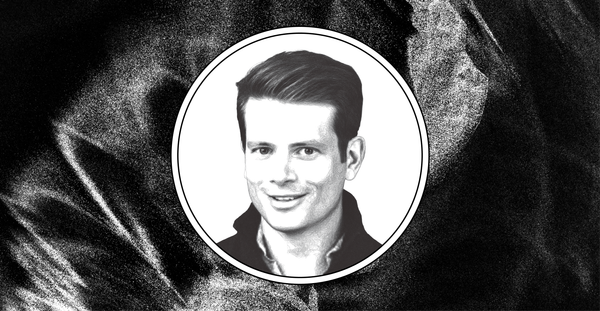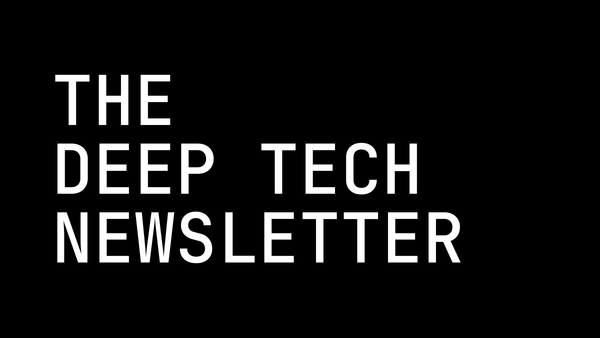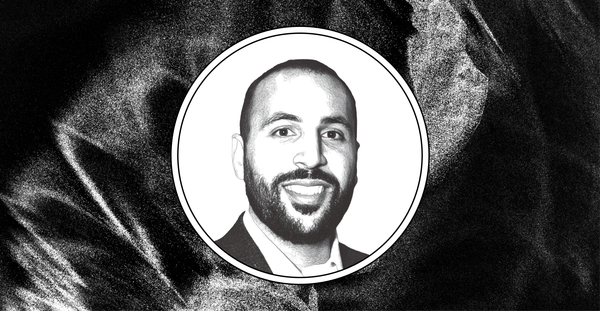The De-extinction Business with Colossal Biosciences’ Ben Lamm
Ben Lamm is the cofounder and CEO of the de-extinction company Colossal Biosciences.
Ben Lamm is the cofounder and CEO of the de-extinction company Colossal Biosciences. Prior to Colossal, Lamm founded Hypergiant, an enterprise AI company developing technologies for the space, defense, and critical infrastructure sectors. Lamm is an advisory board member for the Planetary Society and on the Board of Trustees at the Explorer’s Club.
.jpg)
You’ve led several different companies in a variety of industries—from mobile gaming to satellite software. What led you to biotech as your next venture?
I was on the call with George Church and we were talking about how we could leverage technology and software in synthetic biology to make better systems. I had reached out to him because I was really fascinated with CRISPR and I was also pretty passionate about climate change. We built a system at Hypergiant called the Eos bioreactor, which was a photobioreactor that could sequester about the same amount of carbon as 400 trees. Our question was how do you make this bigger and more efficient? Could you use synthetic biology to engineer the algae to be even more efficient, or produce a better biomass output from it? So I just reached out to him and at the end of the call, he was like,
“By the way, I’m working to bring back mammoths and other extinct species to reintroduce them back into the Arctic to regenerate the ecosystem. But I have to go now. Goodbye.”
I had just heard the greatest thing ever and then the call was over. I stayed up all night reading articles and listening to interviews about all these things. So I just got more and more excited about it and then two weeks later, I was in his lab and spent all day talking to him about mammoths and how we could actually achieve this. By the time I left I was all in.
George had been working on this research direction for decades by the time you contacted him. What made you believe that this was a technology that was ready to be brought out of the lab and commercialized?
All the technologies needed to achieve this already exist in some form or fashion. It’s mostly about making them more efficient and making them work at scale. There are interesting technology and innovation challenges, but not really invention challenges. It seemed like one or two technologies that come from this could be multibillion dollar companies on their own. For example, we think that Form Bio is a billion dollar plus opportunity. So all of our early stage investors will be getting a massive return just on that. And we’ve got numerous technologies that will come out of Colossal that I think have the same kind of potential. We do think there’s massive applications in terms of conservation, carbon sequestration, and biodiversity carbon credits as well. So when we started the business we knew there were like three or four business lines already and each could make a pretty viable business on its own. So I thought that we could build a pretty interesting innovation hub model when you’re learning more as you go and creating even more opportunity. We’ve gotten a lot of the Bell Labs comparisons, which is about one of the nicest things you could say.
Both you and George have a lot of experience as operators and advisors at startups, but George also has one foot in academic research. What are the advantages of doing the kind of biotech R&D as a private company versus in a university laboratory?
Academia is amazing and a lot of great sparks of innovation come from academia. But without support and oxygen, it’s difficult for those sparks to turn into a fire. As George accurately says, if he had the right money to do this five years ago, we’d have a mammoth today. The problem is a lot of these academic labs are massively underfunded. A lot of them then focus on a point solution because they don’t have the funding to build the whole system. It all comes back to funding and focus. We’ve got 87 people at Colossal and an additional 30 postdocs internationally. We’re committed to the core vision of de-extinction, but this funding and focus allows us the optionality to experiment in areas that feel academic and could lead to new sparks of invention while we’re innovating on what we have to do to deliver on the de-extinction cause. I don’t think that you could have built a mammoth or any of these extinct species in an academic lab just because of the funding and time horizons. There’s also constant context switching in academia because if you go get a grant for X, you kind of have to go work on X even if you’re really excited about Y. That’s what’s unique about a company: you can just raise the money to go work on Y, which is what we’ve done.
How can startups best leverage academic partnerships to achieve their mission?
You have to have realistic expectations. We want all of our academic lab partners to have the freedom to work and experiment and come up with novel ways to approach some of these problems. We don’t tell them that you need to deliver X based on some time period or with some margin of error. We don’t have those expectations. What academia is really great at is producing incredible minds that then you can then put into a structure like Colossal where they can then go develop a product that makes an impact in the real world.
What technological developments have enabled a company like Colossal to exist?
First of all, the cost of genetic sequencing is coming down as fast as it has. If sequencing was still billions of dollars versus hundreds to thousands of dollars, Colossal would be impossible. Because you don’t only have to sequence mammoth genomes and Asian elephant genomes as reference genomes, and then do all the correlations there . We also resequence when we make edits to double check our work. So this just wouldn’t be possible unless we were able to do sequencing at scale at a reasonable price point. Then there’s all the editing tools like CRISPR that led to a lot of innovation in genetic engineering. For example, we’ve developed a novel technique of delivering major blocks of synthesized DNA efficiently so they’re not knocking out a single nucleotide at a time. We’ve been very thoughtful about how to innovate in the way we use these technologies as well. For example, we want to advance multiplex editing. How do we edit multiple genes across the genome at the same time with a 90%+ efficiency rating, and very few off-target effects. That would make our lives a lot easier.
What is the go-to-market motion like for a de-extinction company?
It depends on the business line. So our core business line right now is around innovating on these technologies, right. So, for example, we’ve got some interesting advantages in terms of novel ways to deliver large cassettes of synthesized DNA into mammalian genomes and we spun out Form Bio to commercialize that technology. We’ve got some pretty interesting things around hydrogel and microfluidics that’s coming from our teams. So we’re pretty excited about the innovations that are coming out of Colossal and that is a core driver of our business model. We also think that there’s opportunities for governments in terms of helping them with biodiversity, advanced reproductive technologies, and whatnot. There’s a huge application around carbon credits and biodiversity credits as well that we’re starting to implement with a couple of third party partners. So Colossal has multiple shots on goal to create multi-billion dollar economic returns.
Biotech is infamous for having these massive boom-bust cycles. How are investors thinking about a company like Colossal and its prospects in this industry when nothing like this has ever been done before?
We don’t think of ourselves as biotech because we’re not going through like phase one clinical trials. It’s either make a mammoth or you don’t. But this idea isn’t for everyone. It’s a crazy thing. But at the same time, it’s one of those things that changes the world. If you have the opportunity to change the world, how can you not support and invest in that? So there’s a function of economic return, but I think there’s a function of being a part of something that makes history and changes the world. Most of our investors are very long term thinking so they’re not as driven by a fund life cycle where they have to make a certain return in the very near future.
As someone who has led multiple software companies, what learnings have you brought from that world to your work at Colossal?
One of the biggest things that helped me in my career is becoming comfortable with context switching. I’ve never seen the amount of context switching that happens at a company like Colossal so I think that really helped prepare me for this role. Because one minute I’m talking to a government, the next I’m talking to a scientist and then I’m talking to an investor or doing a press interview. So learning the art of context switching has been really helpful for me. I think also knowing how to look at things from a systems perspective and then starting to break down the facets that you need to put together. That’s been really, really helpful.
What advice do you have for someone who is thinking about switching from software to launching a hard tech company?
My biggest advice is if you’re passionate about it, do it right. You can always go build another software company. I’m very, very passionate about Colossal and focused on its success, but at the same time–nothing ventured, nothing gained. If you don’t go after these big opportunities, you’re not going to move society forward. Every entrepreneur says they want to go change the world. If you really do believe that then go do it. You’ll learn a lot from the journey.
HAUS specializes in public relations and creative services for deep tech startups.




